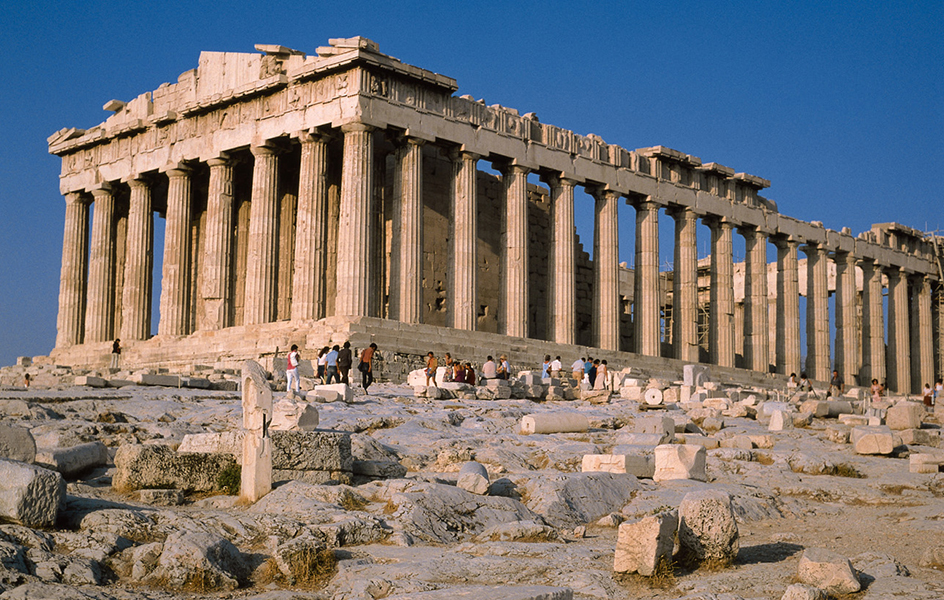Parthenon << PAHR thuh non >> is an ancient Greek temple in Athens. The temple stands on a hill called the Acropolis overlooking the city. The Parthenon was dedicated to Athena, the city’s patron goddess. It is probably the best example of ancient Greek architecture.

The Greeks erected the Parthenon between 447 and 432 B.C. The temple was designed by the Greek architects Ictinus and Callicrates. The Greek sculptor Phidias designed the sculptural decoration for the building. The Parthenon became a Christian church about A.D. 500. After Muslim forces of the Ottoman Empire captured the city in the mid-1400’s, the Parthenon served as a mosque.
In 1687, the Parthenon was badly damaged when the Venetians tried to conquer Athens. The Ottomans were using it for storing gunpowder, which exploded and wrecked the central part of the building. The remaining sculpture has since been moved to the Acropolis Museum in Athens and the British Museum in London (see Elgin Marbles). Today, only ruins of the building remain.
The Parthenon was built entirely of Pentelic marble, a white marble that was brought from Mount Pentelicus 11 miles (18 kilometers) from Athens. The temple is a rectangular building that measures 237 feet (72 meters) long and 110 feet (34 meters) wide. It stands about 60 feet (18 meters) high.

The Parthenon contains a central enclosed space, called a cella, which is divided into two rooms. One of the rooms once contained a huge statue of Athena made of wood covered with gold and ivory. The other room served as a treasury. A total of 46 Doric columns surround the cella (see Column (The Doric column)).
Brightly painted sculpture originally decorated the Parthenon. Sculptures once filled the two pediments (triangular ends of the roof). The eastern pediment was decorated with scenes showing the birth of Athena. The western pediment showed the battle between Athena and the sea god Poseidon for the control of Athens.

Around the top of the outer wall above the columns of the Parthenon was a series of small sculptured panels called metopes. The metopes showed famous mythological battles between the Lapiths and the centaurs, the gods and a race of giants, and Greeks and Amazons. These sculptured panels also presented battle scenes from the Trojan War. Along the outer wall of the cella was a continuous horizontal frieze (decorated band). The frieze showed the people of Athens, including Athenian officials, priests, maidens, and young men on horseback, in the annual procession honoring the birthday of Athena. The government of Greece is restoring the Parthenon.
